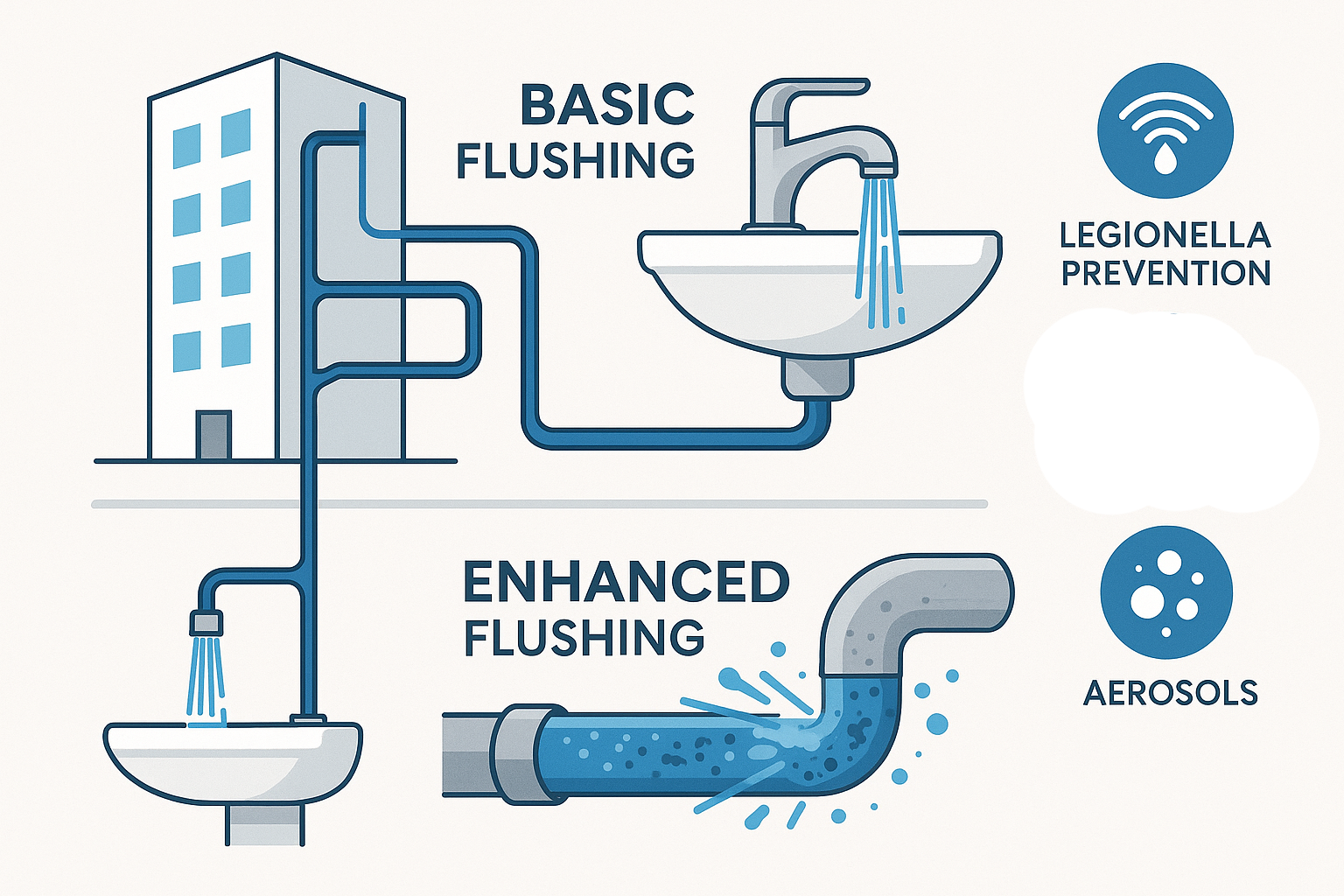The Art of Flushing for Water Management Programs
One of the main control measures for a water management program is this one word “flushing”
What does it mean? What are we trying to accomplish? What’s the best way to accomplish it?
There are 2 styles of flushing to incorporate into a water management plan.
A: basic flushing
B: enhanced flushing
These are terms that we use for simplicity.
Both of these flushing mechanisms are important for Water management programs.
Why Flush?
Stagnant water can create the perfect conditions for harmful bacteria like Legionella to grow, especially in warm temperatures. By regularly flushing taps, showers, and other outlets, you keep the water fresh and reduce the risk of Legionella, by constantly bringing in fresh water.
What’s the difference?
Basic flushing:
Can be easily implemented by having housekeeping turn on all fixtures twice weekly for routine flushing. It can be included in their tasks when they clean rooms. It is important to include the duration that the fixtures should be kept on for ideally for at least one minute after the water reaches maximum temp. (we have seen many cases where we have asked the management team about flushing and they say yeah, we turn on the sinks how long? 30 seconds not long enough sometimes it’s even only the cold side that is turned on!)
Flushing can also give good data on the plumbing system by seeing how long it takes to get hot which will provide data on the plumbing system and whether there are system imbalances or cross connections.
Enhanced flushing:
Enhanced flushing is performed by removing aerators, showerhead fixtures and other flow reducing fixtures.
Many times, we see older buildings which have larger pipes sizes allowing for greater flow however due to the Energy Policy Act of 1992 (EPA act 1992) which reduces the flow rate at point of use there it effects the level of the water sitting in the pipes negatively. The current president has changed the act which can have positive effect on legionella management by increasing the flow rate at the point of use. We have seen many cases where after removing the aerators and shower heads the flow is significantly increased, hot water is reached in a much quicker timeframe and sediment, and debris get removed from the system.
Enhanced flushing can release aerosols and dislodge biofilm; proper precautions should be taken when in occupied rooms with immuno-compromised patients:
Periodically performing enhanced flushing, though time consuming can be very beneficial in the long run for proper water management.
Final Thoughts
Basic flushing keeps things moving, but enhanced flushing clears out the deeper sediment that builds up over time.
Flushing is often overlooked but there is no reason it should be, with proper guidance and accountability it will get done!!
Let’s keep the water flowing—and safe.
Article written by Avi Klein
ASSE 12080 Certified Legionella Water Safety & Water Management Specialist

